In a county where 218,510 residents are food insecure (meaning they don’t know where their next meal will come from), and where a local food bank will distribute groceries to 40,000 individuals each month, food activists are continually innovating ways to break the cycle of poverty—for good. The solution is actually under our feet: the soil.
The Sacramento region is known for an ideal Mediterranean growing climate and renowned class-one soil. With so much need paralleled by such bounty, the most reasonable answer is to connect the two: empower local residents with access to grow their own food—and earn a living from it.
Currently, city zoning laws prohibit the growing and selling of food from your school, church or home. Yet, to community organizers, the potential to change this zoning means improved lives and health of local residents.
The Sacramento Urban Agriculture Coalition, started in March of 2012, doesn’t have a traditional president or CEO. Instead, it’s comprised of entities including Alchemist Community Development Corporation, Alliance of Californians for Community Empowerment, Pesticide Watch, Sacramentans for Sustainable Community Agriculture, Ubuntu Green, Soil Born Farms, local residents and community activists. They say we need expanded urban agricultural policies in Sacramento to truly move the dial on issues of poverty, health and hunger.
“There’s a lot of potential (in the region),” says local policy advocate and the coalition’s organizer, Matt Read, “because a lot of people are seeing that the food system doesn’t work for everyone. This is a larger conversation about food equity.”
“Food access and food justice groups’ use is turning much more legislative,” Read continues. “That’s what the well-moneyed, large-scale ag producers use. We’re taking a page out of their play book.”
The Paperwork
The coalition’s first foray into public food policy came in 2012, when the city was preparing to renew its general plan, a thick document meant to guide land use and development. Rewriting the plan is daunting work—a task meant for those patient enough to endure the long haul. Officials invited members of the coalition to share their opinions, who then gathered community members to collect ideas.
A clear need surfaced quickly: urban farming. By increasing the growth of healthy fruits and vegetables in local gardens, residents have access to an ongoing source of quality food. Yet, gardening alone isn’t enough to lift someone out of poverty. Community organizers wanted more: the ability to sell food grown in local plots.
Organizers’ work was twofold: work with city officials to create a new zoning policy, and build awareness about the policy process so local residents could help.
Now entering its third year of grassroots organizing, the coalition’s efforts have shifted from rewriting the city’s general plan to creating a stand-alone city ordinance. If the city ordinance goes well, they intend to expand their work to pass a county ordinance as well.
Read has taken on a bulk of the research needed to move the urban agriculture ordinance forward and was instrumental in leading the group away from the city’s general plan work to target new zoning that allows increased urban farming, including sales of the food grown.
“We didn’t need general language,” Read says, “but specific changes to remove holdups. That difference between general planning and zoning is indicative of the larger problem: that zoning is foreign to people and they don’t feel empowered to make changes to this process.”
The process is a messy, tedious one, and Read hopes some simplification will empower residents to join the movement. By empowering them with food policy knowledge, he believes locals can begin to improve access to food for themselves and their neighbors.
City Politics
Katie Valenzuela, a community organizer, arranged urban garden tours for city planners, highlighting the range of existing urban garden uses, which range from guerilla gardening to backyard gardens, creating awareness among local officials. She has seen her patience tested by the process of policy change. Public meeting agendas are vague, causing coalition members to adlib on the spot, despite any preemptive preparation and planning.
“They’ve been awful about giving us the language, they’ll only give you an outline,” says Valenzuela. “We’re sitting in meetings, passing notes to each other, because no matter what we prepare, we’re planning on the spot based on what they’re saying.”
Other frustrations have come when the process leaves the hands of residents on the ground and enters the halls of policy, where the employees tasked with writing language aren’t experts in urban agriculture.
At one point, city officials wanted to limit the zoning to vacant lots, a plan that organizers rejected based on current demand. Local residents, churches and schools throughout the city are interested in building new gardens. Popularity of urban farming is at an all-time high.
“Half of the demand out there are backyard gardens and churches, not vacant lots,” says Valenzuela. “It flies in the face of state laws that say, ‘Schools can do this unless a local jurisdiction says no.’”
City planners were afraid of unkempt gardens in residential neighborhoods or near businesses. Read says urban farms and gardens aren’t nuisances. “These are assets to communities. Once these pop up they might really change the landscape of a lot of these neighborhoods.”
Eventually, the city agreed with the organizers, and added draft language to allow urban farming in non-vacant lots that would include home gardens and churches.
Another temporary obstacle: creating a 50-foot setback for urban farms, pushing gardens further from the sidewalk or street. Community organizers say this would eliminate some families from being able to grow at all. For some residents, the only sunny patch of land they have is a small front yard near the sidewalk.
“The setback would include garden beds and benches, thereby nullifying front yard gardens,” says Valenzuela. “So you’re going to have to get a city permit to put a bench in your front yard?”
The coalition also won that argument, and setback language has been removed from the draft language.
Plant for Change
As the coalition enters the next stages of the policy, there will be more public meetings (to be announced in January) that will require community support from urban farmers throughout the city.
“A friend asked how he could help,” says Read. “He was planting a vacant lot in Midtown. I told him to just do a killer job on the garden that you’re doing so it looks super good and you can get people on board. We need people to see great examples of this and realize that it’s something they want in their neighborhood—to take it out of the abstract.”
In addition to planting more urban gardens, the coalition is calling on the public to contact their city council members and their county supervisors to voice their support.
As word of the game-changing idea spreads through the food movement, even local chefs including Block Butcher Bar’s Michael Touhy, Patrick Mulvaney of Mulvaney’s B&L and Magpie’s Ed Roehr have written letters to the city supporting the initiative. Read hopes others in the community will also speak up.
“At the local level, I think Sac is coming into its own as more of an activist town,” says Read. “I hope that’s the case.”
Recommended For You
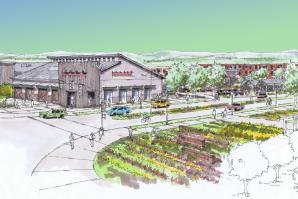
Urban Homestead
The Cannery in Davis blends city and country living
The Cannery is a housing development with a distinctly Davis flavor—that is, the taste of home-grown fruits and vegetables.
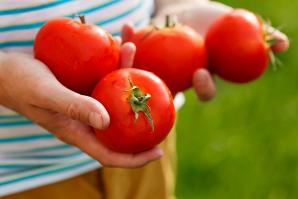
Touchscreen to Table
West Sacramento to address food access with Code for America
Code for America works with cities around the country, using open-source software to improve the scalability and reach of government services. Starting next year, Code for America fellows will work with the Sacramento Area Council of Governments and the city of West Sacramento using technology to tackle issues related to health care and food access in the city.
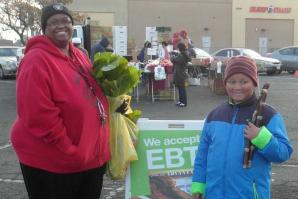
Healthy Options
Farmers markets and urban growers combat local food deserts
Despite living near some of the most productive farmland on earth, many Sacramentans are unable to find produce that’s both fresh and affordable in their own neighborhoods.
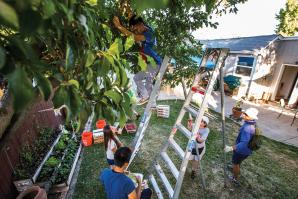
Scavenger Hunt
Unpicked produce can change the way food banks feed the hungry — you just have to know where to look
“Eat local.” You’ve heard the phrase a billion times. It’s the guiding principle of the farm-to-fork movement, nudging us away from the Industrial Food Complex and toward our neighborhood farms. But there’s something even more local than a ranch down the road: the orange tree in your front yard.



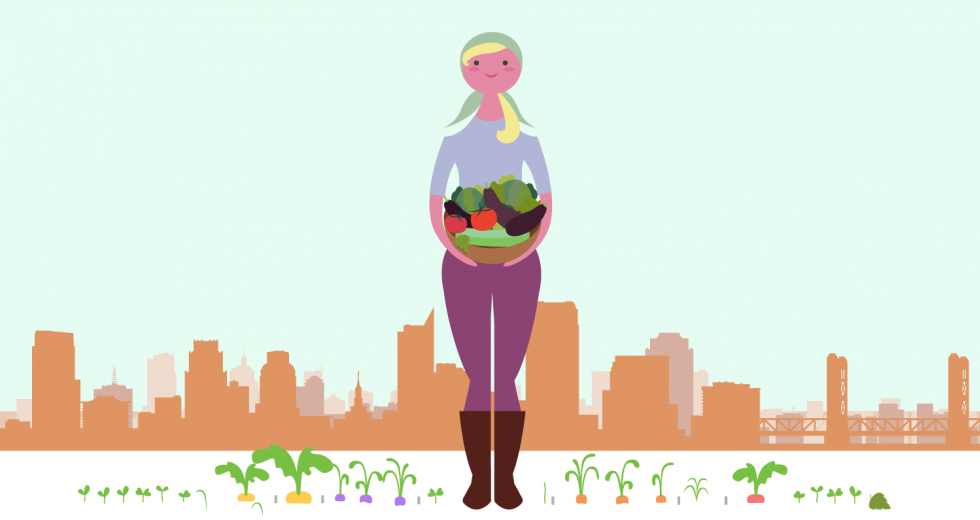
Comments
Thanks for a great article, Amber. I'd encourage readers who care about supporting urban ag in Sacramento to sign the Sacramento Urban Ag Coalition's petition to City and County leaders: http://bit.ly/SacUrbanAg
One minor note: our County proposal is coming out Friday. Its not contingent on any outcome at the City, its happening right now! The County proposal will be available here: http://www.ubuntugreen.org/adv...